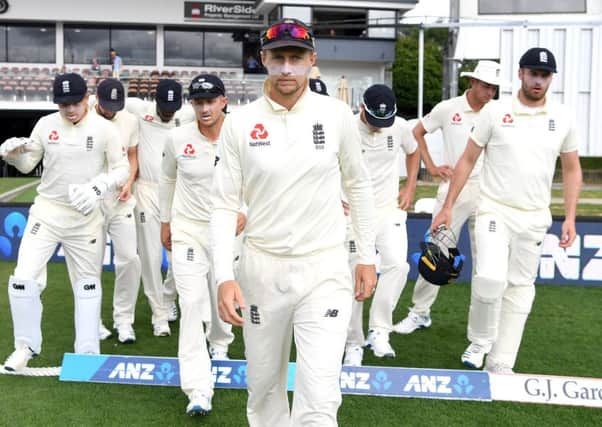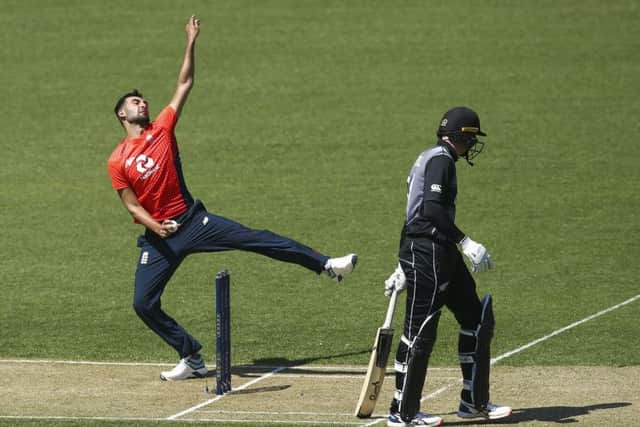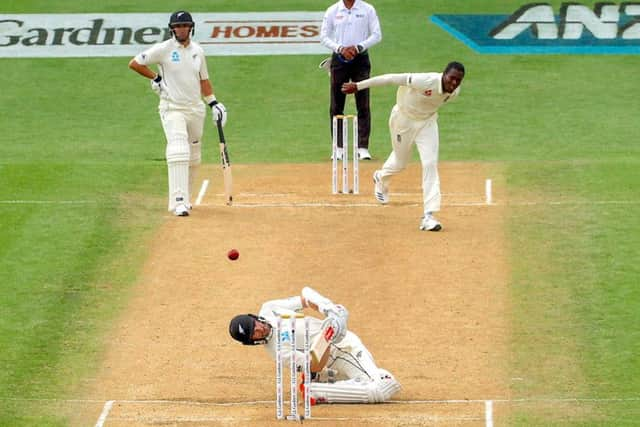Chance to experiment for Ashes is passed up by England in New Zealand


Not to station Joe Denly at mid-wicket is the flippant answer, Denly having dropped one of the easiest catches in history when he spilled Kane Williamson off Jofra Archer on the final day of the series.
The ball looped towards Denly so slowly, so apologetically, only to go straight into the bread-basket and out again, as Richie Benaud might have said, that pundits were left racking their brains as to a worse dropped catch.
Advertisement
Hide AdAdvertisement
Hide AdAgreement swiftly fell on Mike Gatting’s laughable effort at silly-point to reprieve Kiran More off Ian Salisbury at Chennai in 1993, a gentle lob off the splice that Gatting tried to blame on the fact that the sun was in his eyes.


Had the ball been a cream bun, of course, or a lemon meringue pie, the opportunity would surely have been grabbed.
Levity aside, and Denly will find it no easier to live down than “Fat Gatt” did a generation ago, this was not a successful Test trip for England.
Not only did they lose 1-0 after a dire innings defeat in the first Test in Mount Maunganui, before drawing the second and final game on a featherbed in Hamilton, but they left the land of the long white cloud no closer to learning how to win away from home on flat pitches with a Kookaburra ball.
Advertisement
Hide AdAdvertisement
Hide AdAlthough New Zealand must take some credit for that – a country ranked second in the world which consistently punches above its weight – the England selectors/management were once more guilty of a number of flawed/conservative decisions.


Indeed, it is quite baffling, considering that their entire strategy is openly based on recovering the Ashes in 2021-22, and on winning Tests abroad in unhelpful conditions, that they did not take the chance to experiment more in terms of team selection, especially as the series was not part of the dreaded World Test Championship.
England have long and quite rightly highlighted the need for extra pace to win Tests in Australia, a la that possessed by Archer, and yet declined the opportunity, for instance, to look at the Lancashire pace bowler Saqib Mahmood.
Similarly, they are desperate to find a top-class spinner, especially a wrist-spinner, and yet also overlooked his county colleague Matt Parkinson for the final Test and instead went into the game with five seamers and no spinner.
Advertisement
Hide AdAdvertisement
Hide AdAlthough England would counter that this was a horses-for-courses decision, based on the surface/conditions that confronted them, it is debatable whether there is ever a need for five seamers and no spinner, and it was not long-term planning/experimentation on their part but short-term thinking, with the captain under pressure and a new coach naturally eager to impress.
When push came to shove, England were simply not brave enough to try out new things and to build for the future they insist that they want to create for themselves.
Instead, they keep saying one thing and then doing another, and if you keep doing the same thing you are likely to keep getting the same result.
The whole set-up seems in a state of confusion.
Not long ago, England made a big thing of wanting to bat more positively in an effort to put pressure back on the bowlers – a la Eoin Morgan’s one-day team.
Advertisement
Hide AdAdvertisement
Hide AdThey then realised “hang on, that might not work in Test cricket”, so adopted a more patient strategy coming into this tour.
Fair enough, but then they decided that there is, in fact, a line between being patient and too patient, and that it might be best, after all, if batsmen essentially played their natural game.
This is always the best policy – it should be selection and the strengths of each individual player that determines the style of play as opposed to anything else.
England have learned little from the tour and the same questions remain.